Tel Aviv’s burgeoning restaurant scene is embracing adaptive reuse, converting wineries, secret tunnels, hospitals, and even an old garage into new eateries that pay homage to the city’s heritage.
Original features have been rediscovered along the way and brought to the forefront of designs, whether that’s travertine stone or ancient signage, as a plea to keep Israel’s history shining through the density of this rapidly modernising city.
Here are 8 Tel Aviv restaurants that combine top-notch design with contemporary cuisine.
OPA
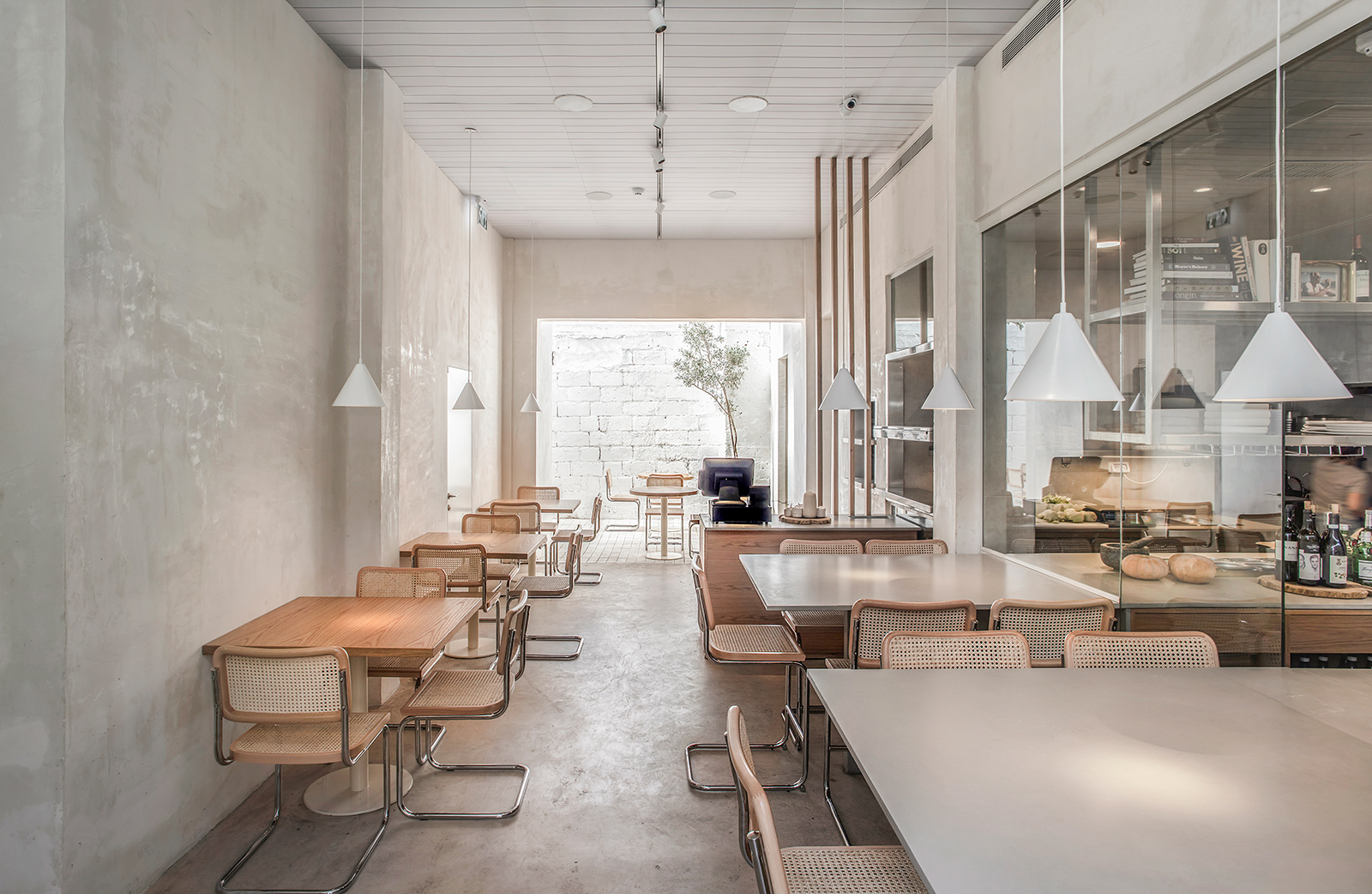
OPA is Tel Aviv’s newest restaurant, located in the city’s Levinsky Market. Designed in collaboration by Craft & Bloom and architect Vered Kadouri, it presents yet another open kitchen layout with a strictly vegan menu by chef Shirel Berger. OPA’s design reflects the food; it’s minimal, unfussy and has been built using the local community’s talent pool. The inner patio is shaped from Hebron stone, the lighting from powder coated white brass and a singular olive tree nods to the menu’s Mediterranean influence. Diners can feast on a menu of seven plant-based dishes – including oyster mushrooms with shitake puree and fermented plum with pickled ginger and mustard compote – served on locally-made ceramics.
Ha-Khalutzim St 8, Tel Aviv-Yafo
Whisky Bar
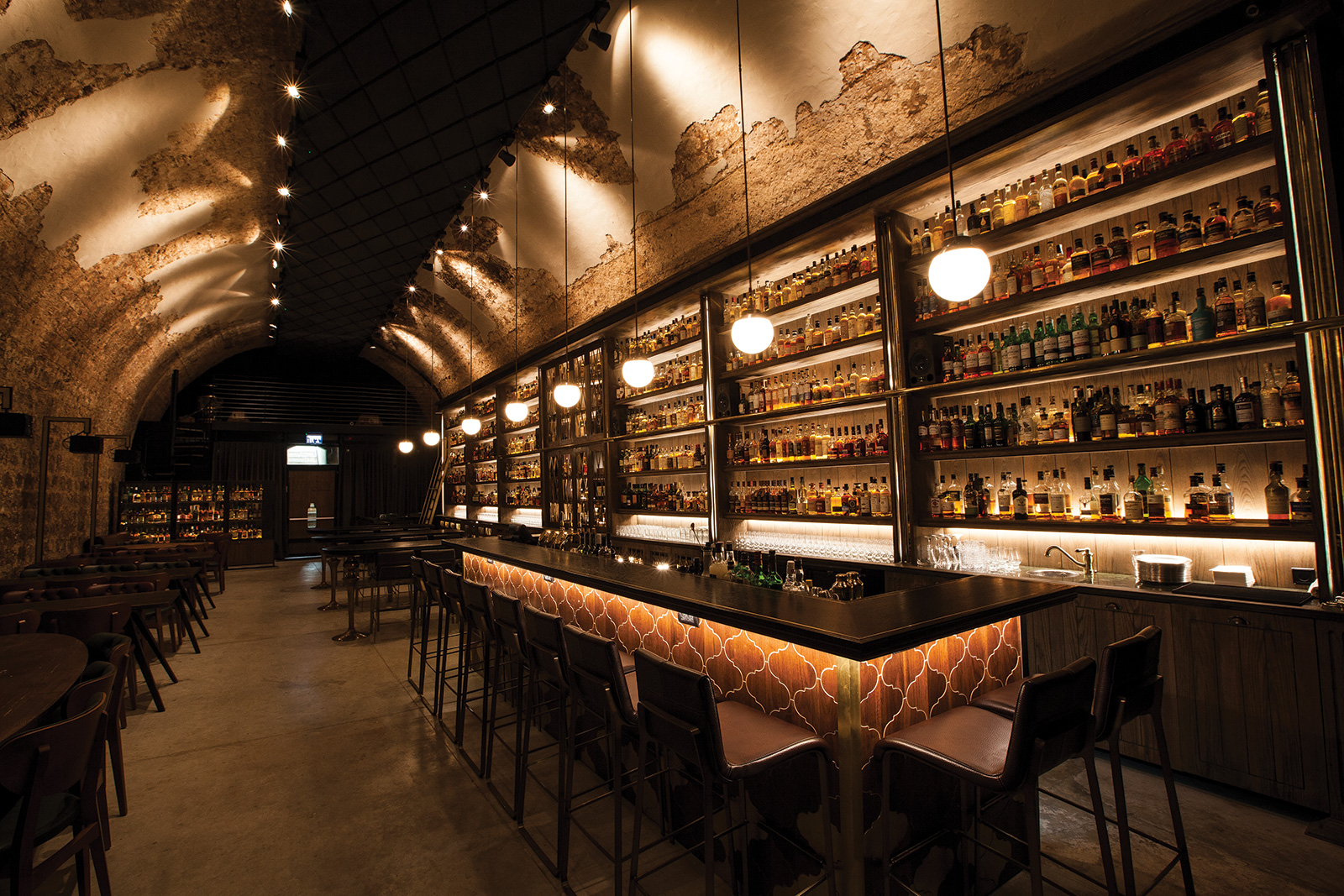
Once an 18th-century Templar’s cave, Tel Aviv’s only whisky museum houses over 1,000 bottles from all over the world. An arched ceiling curves over buttoned leather chairs and two bar-restaurant areas that mirror each other from either side of a central brick wall. Here you’ll also find a 1930s style cigar lounge, which is (technically) the only spot in Tel Aviv where you can legally smoke inside.
Rav Aluf David Elazar St 27, Tel Aviv-Yafo
Claro
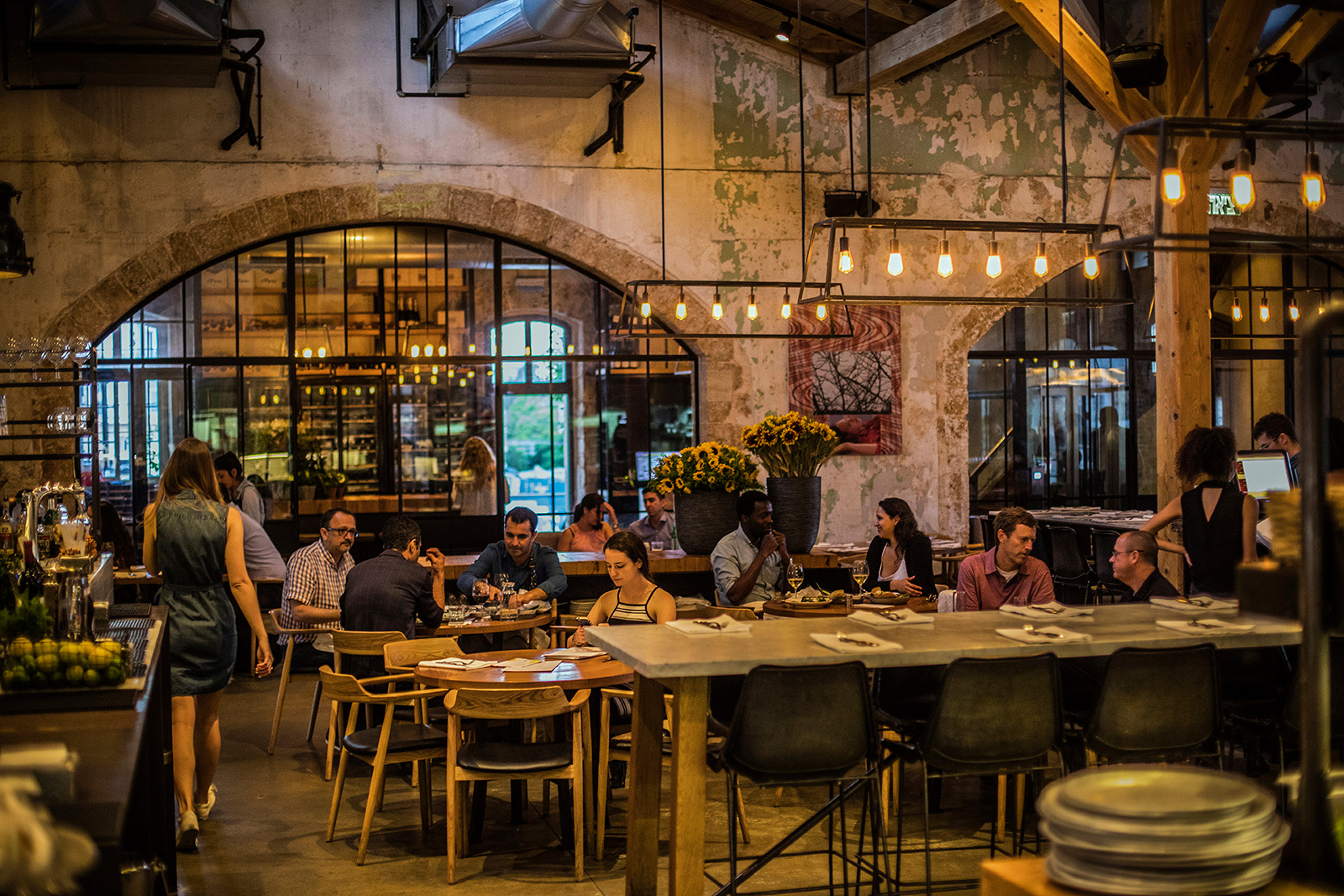
Offering seasonal farm-to-table cuisine in an open layout, Claro is known for the freshest fish dishes in the city. The old winery hides a private event space underneath the restaurant with tunnels leading to neighbouring buildings. All the exposed brick walls are original and the iron lamps were salvaged from an antique train in London. Visitors can either choose set tables or perch on high stools to chat with the kitchen staff and perhaps share a shot over the counter – perfect for casual solo dining.
Cafeteria
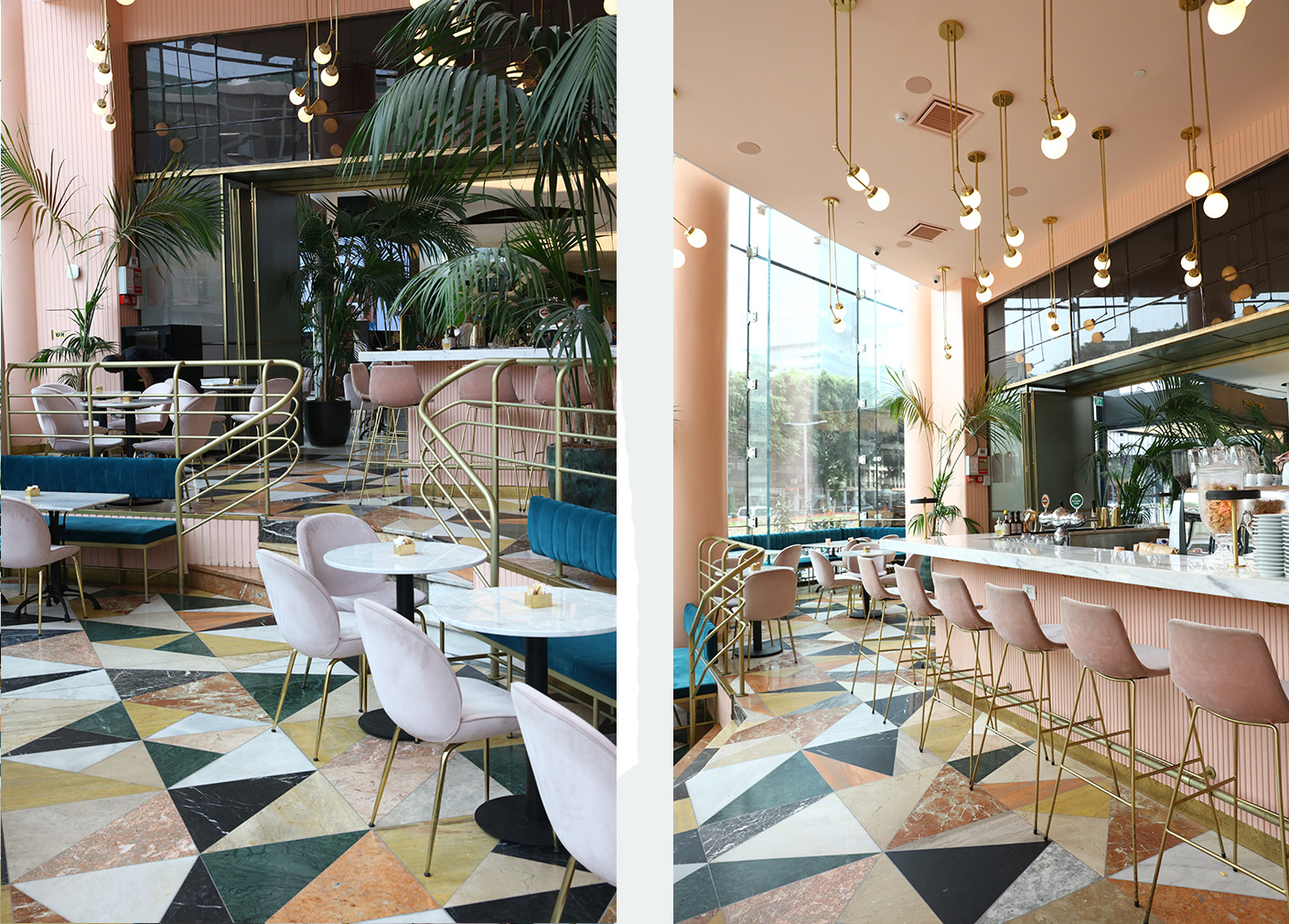
Since opening one year ago, Cafeteria has consistently drawn in crowds thanks to its instagramable interiors by Meir Guri. Its owners admit unashamedly that the restaurant’s peacocking design bows to social media trends. Expect plush, deep teal seating, gold lined stairs and palm trees – a sure-fire combination for instant likes.
HaHashmonaim St 96, Tel Aviv-Yafo
Jaffa Hotel
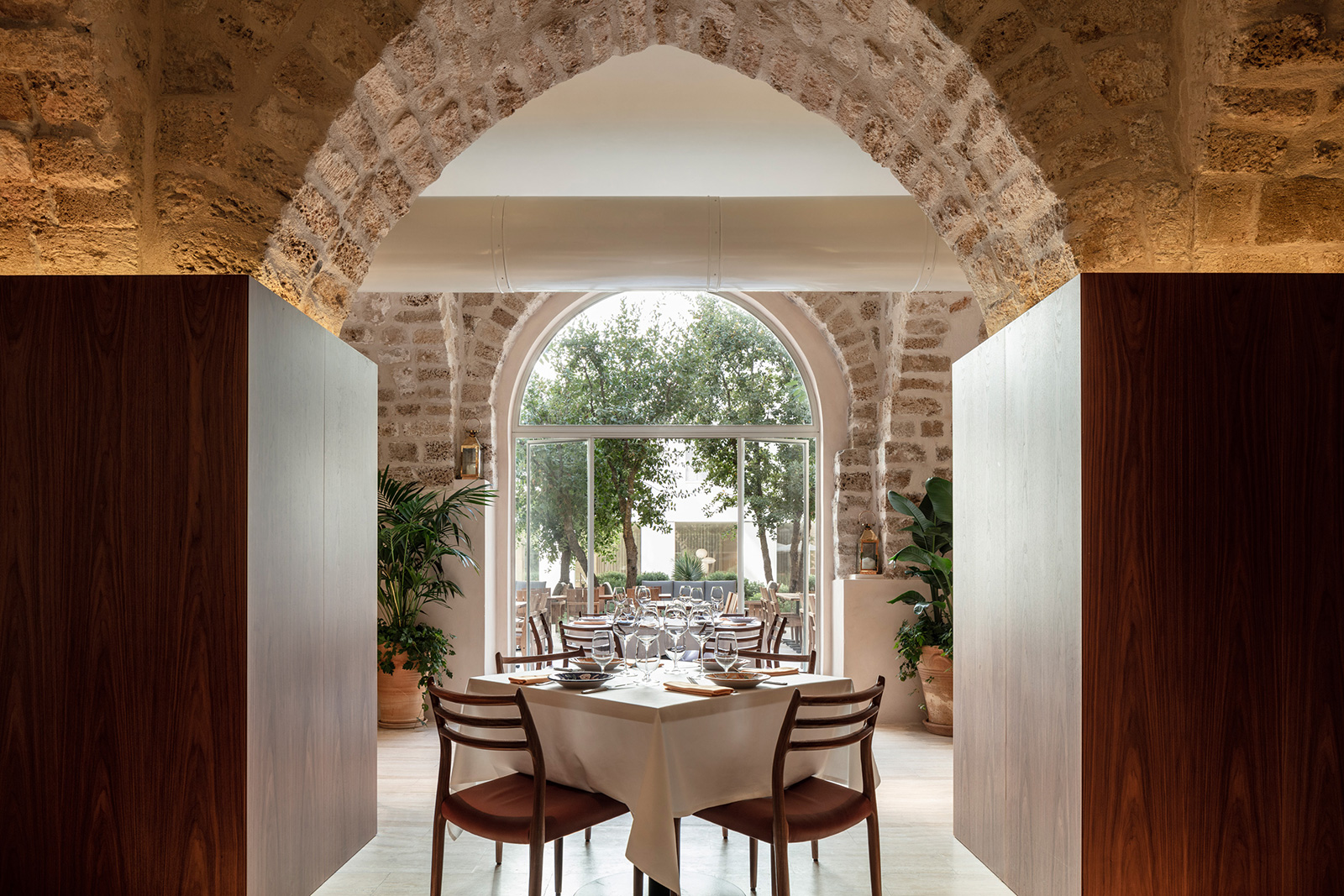
Ten years in the making, The Jaffa Hotel finally opened its doors this summer after the hospital and convent complex was carefully rehabilitated by John Pawson. Artefacts are presented behind glass panes, such as a travertine stone wall that runs through reception. The on-site Golda’s Deli was once the former hospital’s basement, now serving classic bagels and rainbow strip salads in the courtyard or inside under the ancient arches. Meanwhile, Israeli chef Roy Antebi is serving Italian-American cuisine from the hotel’s Don Camillo restaurant.
Louis Pasteur St 2, Tel Aviv-Yafo
Mansura
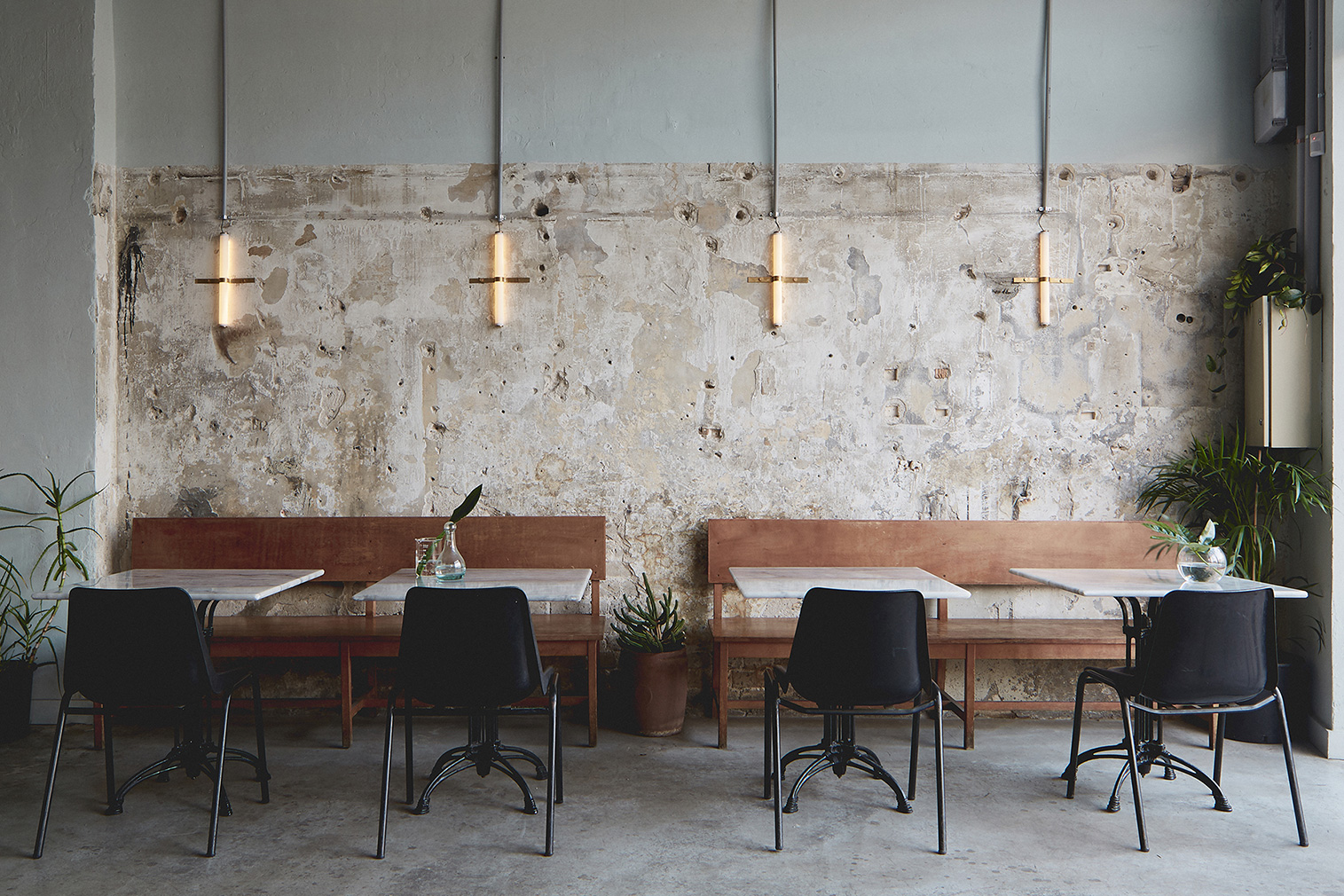
In Tel Aviv-Jaffa’s Noga neighbourhood, industrial meets kitsch at Mansura restaurant. Outside, a mishmash of pots plants and fairy lights draw the eye, whilst simple, square tables and Modernist chairs add order to the interiors by studio This Is It. Metal beams line the walls and the high ceilings have been kept intact since its days as a former garage.
OCD
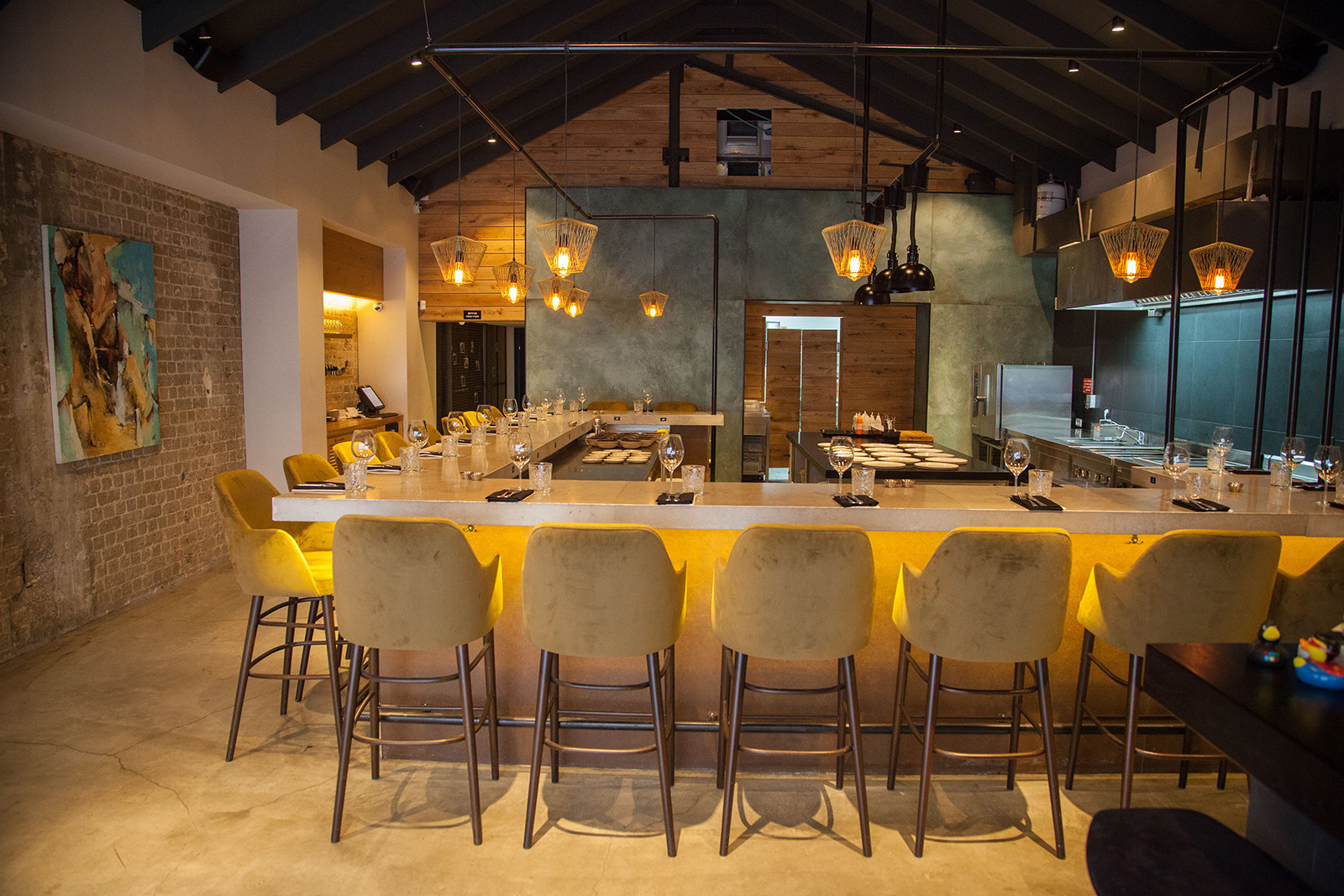
OCD is inspired by Japan’s delicate approach to dining and has introduced a performance-led food experience to the Tel Aviv restaurant scene. Each course on the tasting menu is presented to guests by the chefs across a concrete counter. The feature turquoise wall disrupts the otherwise minimalist design, whilst low-hung lighting adds to the intimacy of the space, which seats only 20.
Beit Kandinof
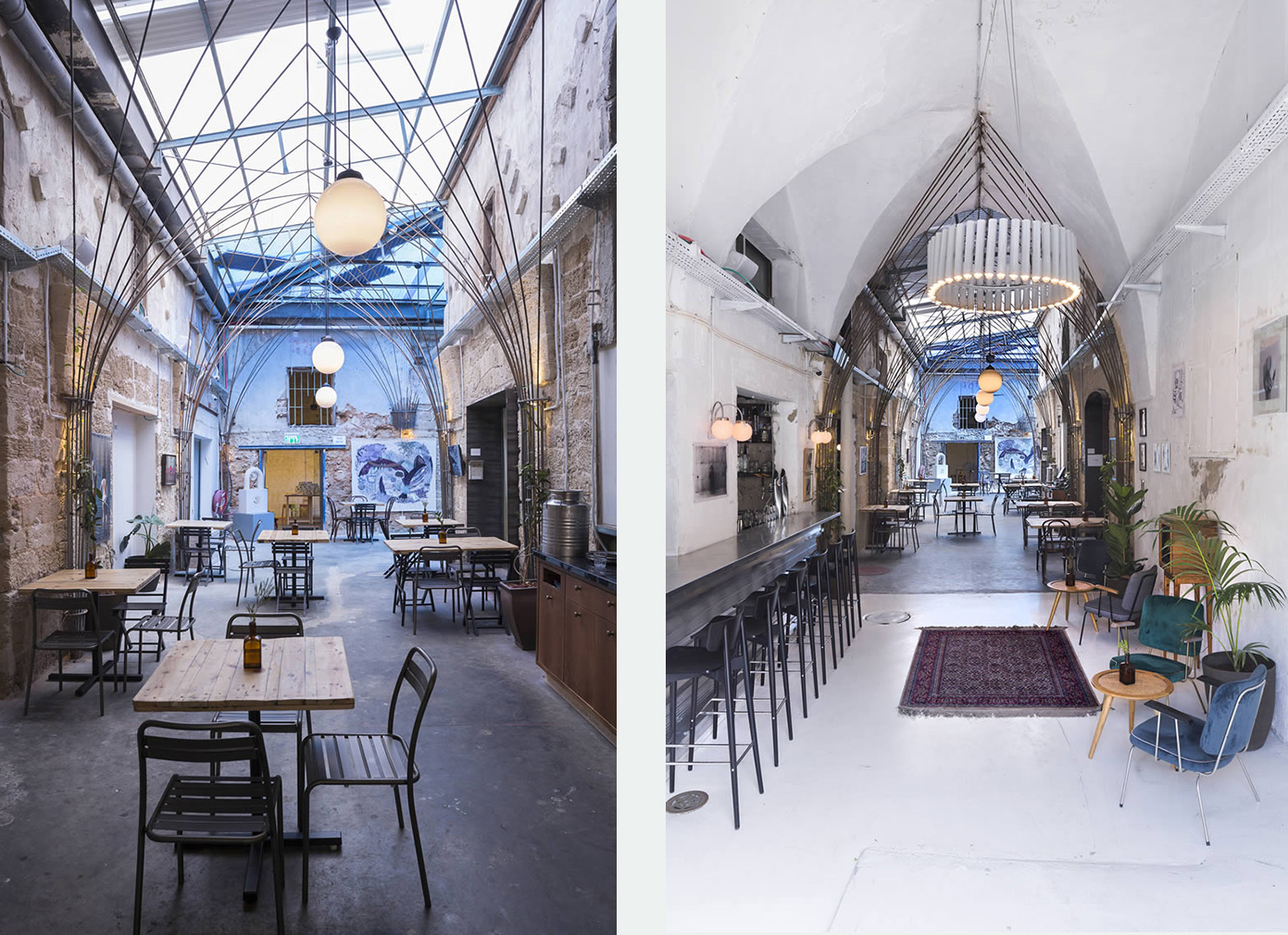
Owned by the Kandinof family in the 20th century, this lean, tunnel-shaped restaurant used to be a street. A cement wall was erected to close off one end and the former shops have been transformed into a bar, exhibition space and private venue. Bent iron rods fan over the tables with fairy lights weaved through and, in the summer, the ceiling can be removed to see the stars whilst local DJs play.
















